Get free scan and check if your device is infected.
Remove it nowTo use full-featured product, you have to purchase a license for Combo Cleaner. Seven days free trial available. Combo Cleaner is owned and operated by RCS LT, the parent company of PCRisk.com.
What is the Chrome Tools adware?
Chrome Tools is rogue software classified as adware. Following successful installation, it operates by running intrusive advertisement campaigns. I.e., Chrome Tools delivers various dubious and harmful ads.
Additionally, this adware has data tracking capabilities, which are used to collect browsing-related information. Due to the dubious methods used to proliferate Chrome Tools, it is also classified as a Potentially Unwanted Application (PUA).
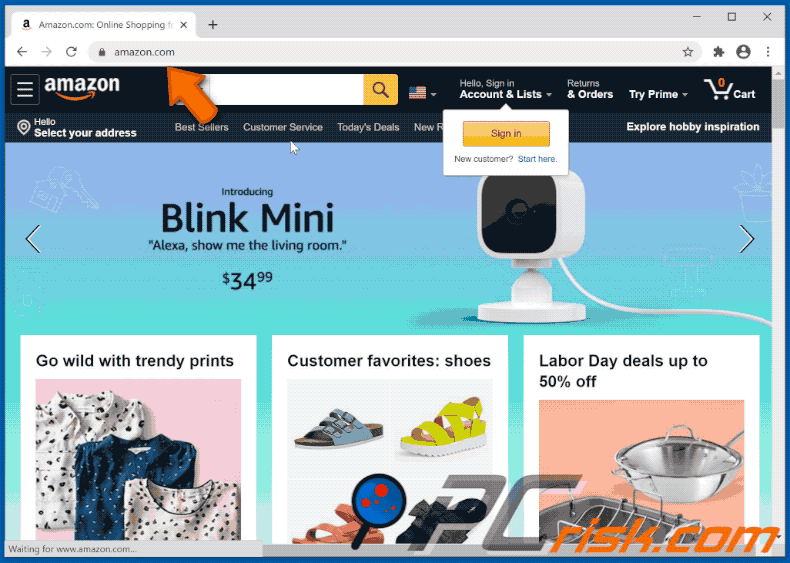
Adware operates by enabling the placement of pop-ups, banners, surveys, coupons, full-page and other intrusive ads, typically on any visited website. Therefore, the ads do not originate from the actual pages - they are delivered by adware.
These advertisements significantly diminish the browsing experience, as they overlay web page content and reduce browsing speed. Furthermore, when clicked they cause redirects and can even stealthily download/install software. To elaborate, intrusive ads redirect to various sale-based/promotional, rogue, compromised, deceptive/scam and malicious websites. Some can even be triggered (when clicked) to execute scripts, designed to download/install software (e.g. PUAs) without users' permission. These unwanted applications can have other/additional capabilities, as well as running intrusive ad campaigns.
PUAs can also force-open bogus and malicious sites. Browser hijacker-type PUAs modify browser settings and restrict/deny access to them to promote fake search engines. The promoted web searchers are usually unable to provide search results, and so they redirect to Google, Yahoo, Bing and other legitimate search engines.
Furthermore, Chrome Tools can track data. It can record browsing activity (visited URLs, viewed pages, searched queries, etc.) and collect personal information extracted from it (IP addresses, geolocations and other details). Adware developers monetize this vulnerable data by sharing it with and/or selling it to third parties (potentially, cyber criminals), likewise seeking to misuse the information for profit.
In summary, the presence of unwanted software on devices can lead to system infections, financial loss, serious privacy issues and even identity theft. To ensure device and user safety, you are strongly advised to remove all suspect applications and browser extensions/plug-ins immediately upon detection.
| Name | Ads by Chrome Tools |
| Threat Type | Adware, Unwanted ads, Pop-up Virus |
| Browser Extension(s) | Chrome Tools |
| Symptoms | Seeing advertisements not originating from the sites you are browsing. Intrusive pop-up ads. Decreased Internet browsing speed. |
| Distribution Methods | Deceptive pop-up ads, free software installers (bundling), fake Flash Player installers. |
| Damage | Decreased computer performance, browser tracking - privacy issues, possible additional malware infections. |
| Malware Removal (Windows) |
To eliminate possible malware infections, scan your computer with legitimate antivirus software. Our security researchers recommend using Combo Cleaner. Download Combo CleanerTo use full-featured product, you have to purchase a license for Combo Cleaner. 7 days free trial available. Combo Cleaner is owned and operated by RCS LT, the parent company of PCRisk.com. |
History Wipe Clean, Damn Good Recipe Promos, OneUpdater, and LiveStreamNewsToday Promos are some examples of other adware-type apps. They may seem legitimate and offer a wide variety of "useful" functionalities, however, the promised features are seldom operational.
This applies to most PUAs. The sole purpose of this unwanted software is to generate revenue for the developers. Regular users receive no value and can instead experience serious problems.
PUAs deliver intrusive ad campaigns, cause redirects, hijack browsers and gather private data.
How did Chrome Tools install on my computer?
Browser hijackers, adware-type apps, and other types of PUAs are commonly distributed by integrating them into the download and/or installation set-ups of other programs, so that a proportion of users inadvertently download and install them together with their chosen software. This distribution method is known as "bundling".
Offers to download and install additionally-included apps usually appear in "Advanced", "Custom" and other settings of the set-ups (where they can usually be declined). Many users fail to check and change these settings, thereby granting permission for PUAs to be downloaded and installed by default.
In addition, unwanted downloads and installations are sometimes caused by clicking deceptive advertisements capable of executing certain scripts.
How to avoid installation of potentially unwanted applications?
You are advised to research all software before download/installation. Use only official and verified download channels. Unofficial and free file-hosting websites, Peer-to-Peer sharing networks (BitTorrent, Gnutella, eMule), and other third party downloaders commonly offer harmful and bundled content, and are therefore untrusted and should be avoided.
When downloading/installing, read the terms, study all possible options, use the "Custom/Advanced" settings and opt-out of additional apps, tools, features, and so on.
Intrusive advertisements typically seem legitimate, however, they can redirect to dubious and malicious sites (e.g. gambling, pornography, adult-dating, and many others). If you encounter ads or redirects of this kind, inspect the system and remove all dubious applications and browser extensions/plug-ins immediately.
Installed programs must be activated and updated with tools or implemented functions that are provided by the official developers. No other third party, unofficial tools should be used.
Note that it is illegal to activate licensed software with ‘cracking’ tools. Files and programs should be downloaded from official websites and via direct download links. Avoid third party installers and the tools/sources mentioned above.
Do not open website links or files in irrelevant emails that are received from unknown, suspicious addresses. These bogus emails are often disguised as official and important. Regularly, scan your computer with reputable, up-to-date antivirus or anti-spyware software.
If your computer is already infected with Chrome Tools, we recommend running a scan with Combo Cleaner Antivirus for Windows to automatically eliminate this adware.
Screenshot of Chrome Tools adware asking for data-related permissions:
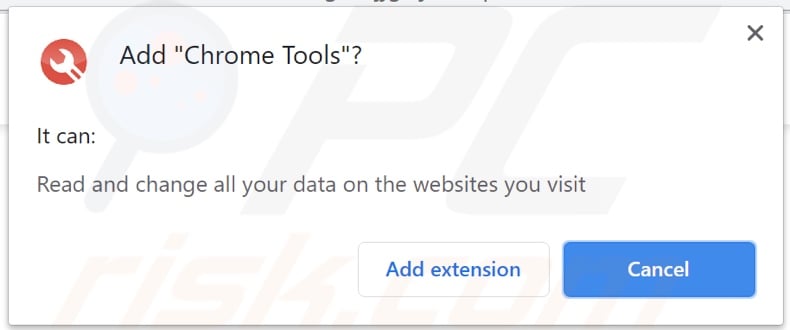
Screenshots of advertisements delivered by Chrome Tools adware:
Screenshot of the website used to promote Chrome Tools adware:
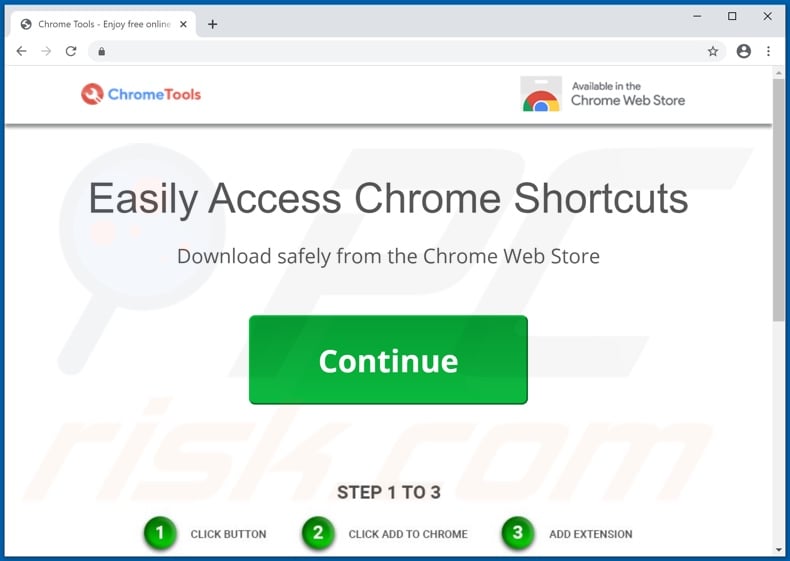
Instant automatic malware removal:
Manual threat removal might be a lengthy and complicated process that requires advanced IT skills. Combo Cleaner is a professional automatic malware removal tool that is recommended to get rid of malware. Download it by clicking the button below:
DOWNLOAD Combo CleanerBy downloading any software listed on this website you agree to our Privacy Policy and Terms of Use. To use full-featured product, you have to purchase a license for Combo Cleaner. 7 days free trial available. Combo Cleaner is owned and operated by RCS LT, the parent company of PCRisk.com.
Quick menu:
- What is Chrome Tools?
- STEP 1. Uninstall Chrome Tools application using Control Panel.
- STEP 2. Remove Chrome Tools adware from Internet Explorer.
- STEP 3. Remove Chrome Tools ads from Google Chrome.
- STEP 4. Remove 'Ads by Chrome Tools' from Mozilla Firefox.
- STEP 5. Remove Chrome Tools extension from Safari.
- STEP 6. Remove rogue plug-ins from Microsoft Edge.
Chrome Tools adware removal:
Windows 11 users:

Right-click on the Start icon, select Apps and Features. In the opened window search for the application you want to uninstall, after locating it, click on the three vertical dots and select Uninstall.
Windows 10 users:

Right-click in the lower left corner of the screen, in the Quick Access Menu select Control Panel. In the opened window choose Programs and Features.
Windows 7 users:

Click Start (Windows Logo at the bottom left corner of your desktop), choose Control Panel. Locate Programs and click Uninstall a program.
macOS (OSX) users:

Click Finder, in the opened screen select Applications. Drag the app from the Applications folder to the Trash (located in your Dock), then right click the Trash icon and select Empty Trash.
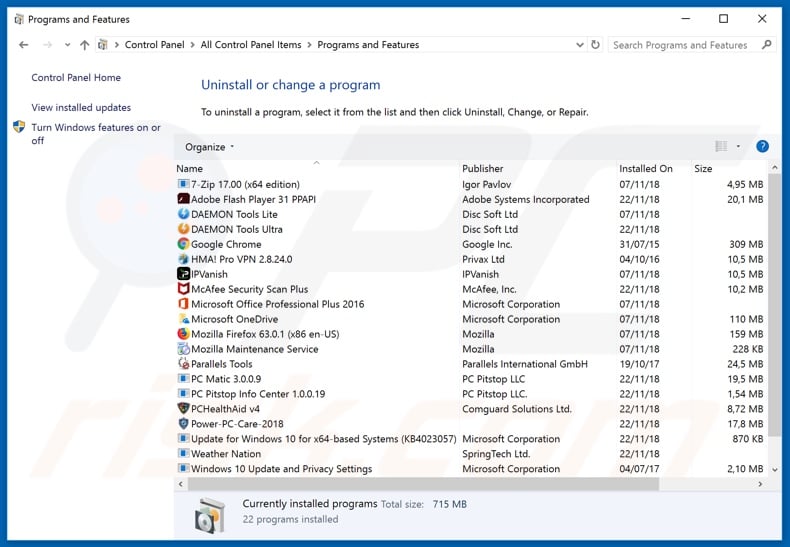
In the uninstall programs window, look for "Chrome Tools", select this entry and click "Uninstall" or "Remove".
After uninstalling the potentially unwanted application that causes Chrome Tools ads, scan your computer for any remaining unwanted components or possible malware infections. To scan your computer, use recommended malware removal software.
DOWNLOAD remover for malware infections
Combo Cleaner checks if your computer is infected with malware. To use full-featured product, you have to purchase a license for Combo Cleaner. 7 days free trial available. Combo Cleaner is owned and operated by RCS LT, the parent company of PCRisk.com.
Remove Chrome Tools adware from Internet browsers:
Video showing how to remove potentially unwanted browser add-ons:
 Remove malicious add-ons from Internet Explorer:
Remove malicious add-ons from Internet Explorer:
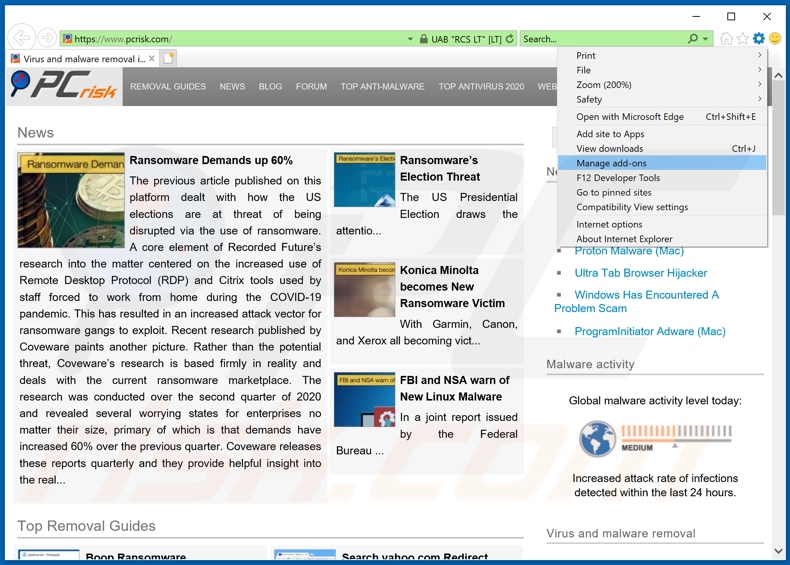
Click the "gear" icon ![]() (at the top right corner of Internet Explorer), select "Manage Add-ons". Look for "Chrome Tools", select this entry and click "Remove".
(at the top right corner of Internet Explorer), select "Manage Add-ons". Look for "Chrome Tools", select this entry and click "Remove".
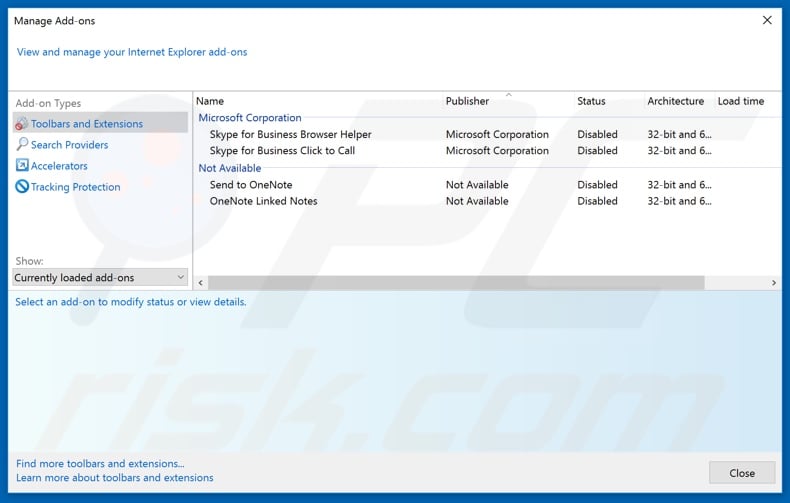
Optional method:
If you continue to have problems with removal of the ads by chrome tools, reset your Internet Explorer settings to default.
Windows XP users: Click Start, click Run, in the opened window type inetcpl.cpl In the opened window click the Advanced tab, then click Reset.

Windows Vista and Windows 7 users: Click the Windows logo, in the start search box type inetcpl.cpl and click enter. In the opened window click the Advanced tab, then click Reset.

Windows 8 users: Open Internet Explorer and click the gear icon. Select Internet Options.

In the opened window, select the Advanced tab.

Click the Reset button.

Confirm that you wish to reset Internet Explorer settings to default by clicking the Reset button.

 Remove malicious extensions from Google Chrome:
Remove malicious extensions from Google Chrome:
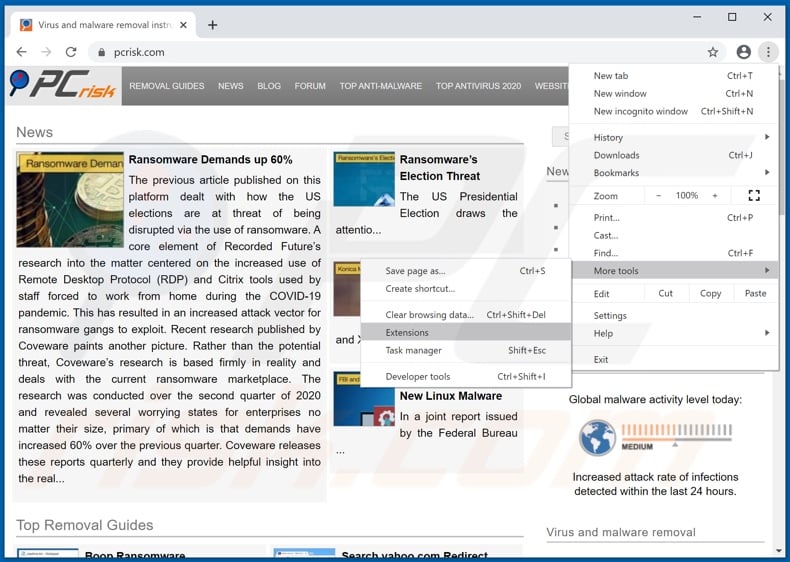
Click the Chrome menu icon ![]() (at the top right corner of Google Chrome), select "More tools" and click "Extensions". Locate "Chrome Tools", select this entry and click the trash can icon.
(at the top right corner of Google Chrome), select "More tools" and click "Extensions". Locate "Chrome Tools", select this entry and click the trash can icon.
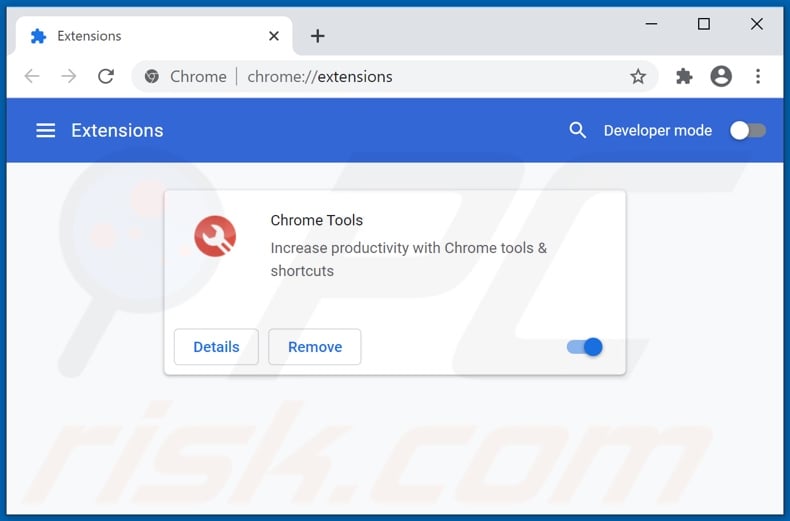
Optional method:
If you continue to have problems with removal of the ads by chrome tools, reset your Google Chrome browser settings. Click the Chrome menu icon ![]() (at the top right corner of Google Chrome) and select Settings. Scroll down to the bottom of the screen. Click the Advanced… link.
(at the top right corner of Google Chrome) and select Settings. Scroll down to the bottom of the screen. Click the Advanced… link.

After scrolling to the bottom of the screen, click the Reset (Restore settings to their original defaults) button.

In the opened window, confirm that you wish to reset Google Chrome settings to default by clicking the Reset button.

 Remove malicious plug-ins from Mozilla Firefox:
Remove malicious plug-ins from Mozilla Firefox:
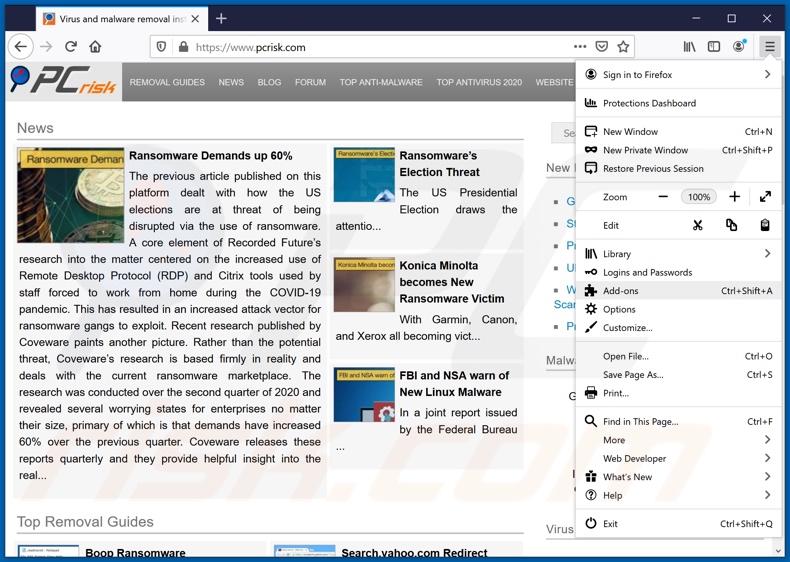
Click the Firefox menu ![]() (at the top right corner of the main window), select "Add-ons". Click "Extensions", in the opened window, remove "Chrome Tools".
(at the top right corner of the main window), select "Add-ons". Click "Extensions", in the opened window, remove "Chrome Tools".
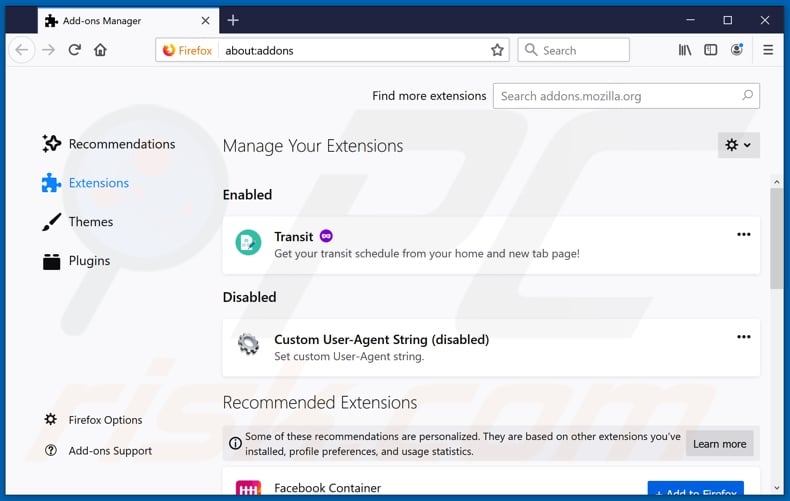
Optional method:
Computer users who have problems with ads by chrome tools removal can reset their Mozilla Firefox settings.
Open Mozilla Firefox, at the top right corner of the main window, click the Firefox menu, ![]() in the opened menu, click Help.
in the opened menu, click Help.

Select Troubleshooting Information.

In the opened window, click the Refresh Firefox button.

In the opened window, confirm that you wish to reset Mozilla Firefox settings to default by clicking the Refresh Firefox button.

 Remove malicious extensions from Safari:
Remove malicious extensions from Safari:

Make sure your Safari browser is active, click Safari menu, and select Preferences....

In the opened window click Extensions, locate any recently installed suspicious extension, select it and click Uninstall.
Optional method:
Make sure your Safari browser is active and click on Safari menu. From the drop down menu select Clear History and Website Data...

In the opened window select all history and click the Clear History button.

 Remove malicious extensions from Microsoft Edge:
Remove malicious extensions from Microsoft Edge:

Click the Edge menu icon ![]() (at the upper-right corner of Microsoft Edge), select "Extensions". Locate all recently-installed suspicious browser add-ons and click "Remove" below their names.
(at the upper-right corner of Microsoft Edge), select "Extensions". Locate all recently-installed suspicious browser add-ons and click "Remove" below their names.

Optional method:
If you continue to have problems with removal of the ads by chrome tools, reset your Microsoft Edge browser settings. Click the Edge menu icon ![]() (at the top right corner of Microsoft Edge) and select Settings.
(at the top right corner of Microsoft Edge) and select Settings.

In the opened settings menu select Reset settings.

Select Restore settings to their default values. In the opened window, confirm that you wish to reset Microsoft Edge settings to default by clicking the Reset button.

- If this did not help, follow these alternative instructions explaining how to reset the Microsoft Edge browser.
Summary:
 Commonly, adware or potentially unwanted applications infiltrate Internet browsers through free software downloads. Note that the safest source for downloading free software is via developers' websites only. To avoid installation of adware, be very attentive when downloading and installing free software. When installing previously-downloaded free programs, choose the custom or advanced installation options – this step will reveal any potentially unwanted applications listed for installation together with your chosen free program.
Commonly, adware or potentially unwanted applications infiltrate Internet browsers through free software downloads. Note that the safest source for downloading free software is via developers' websites only. To avoid installation of adware, be very attentive when downloading and installing free software. When installing previously-downloaded free programs, choose the custom or advanced installation options – this step will reveal any potentially unwanted applications listed for installation together with your chosen free program.
Post a comment:
If you have additional information on ads by chrome tools or it's removal please share your knowledge in the comments section below.
Adware operates by enabling the placement of pop-ups, banners, surveys, coupons, full-page and other intrusive ads , typically on any visited website. Therefore, the ads do not originate from the pages - they are delivered by adware. These advertisements significantly diminish the browsing experience, as they overlay web page content and reduce browsing speed. Furthermore, when clicked they cause redirects and can even stealthily download/install software. To elaborate, intrusive ads redirect to various sale-based/promotional, rogue, compromised, deceptive/scam and malicious websites. Some of these ads can even be triggered (when clicked on) to execute scripts, designed to download/install software (e.g. PUAs) without users' permission. These unwanted applications can have other/additional capabilities, as well as running intrusive ad campaigns
Share:

Tomas Meskauskas
Expert security researcher, professional malware analyst
I am passionate about computer security and technology. I have an experience of over 10 years working in various companies related to computer technical issue solving and Internet security. I have been working as an author and editor for pcrisk.com since 2010. Follow me on Twitter and LinkedIn to stay informed about the latest online security threats.
PCrisk security portal is brought by a company RCS LT.
Joined forces of security researchers help educate computer users about the latest online security threats. More information about the company RCS LT.
Our malware removal guides are free. However, if you want to support us you can send us a donation.
DonatePCrisk security portal is brought by a company RCS LT.
Joined forces of security researchers help educate computer users about the latest online security threats. More information about the company RCS LT.
Our malware removal guides are free. However, if you want to support us you can send us a donation.
Donate




▼ Show Discussion